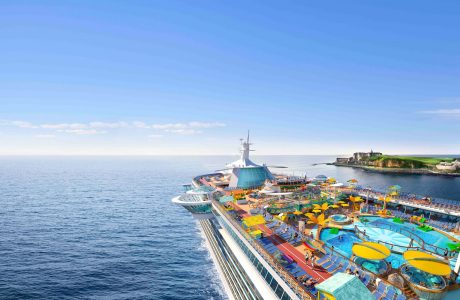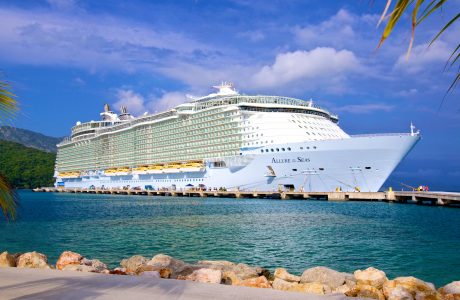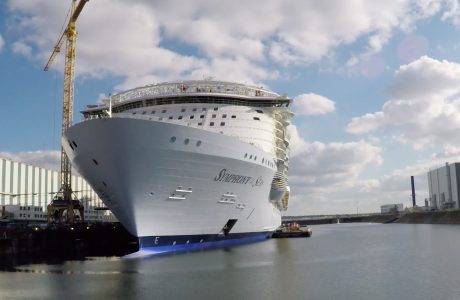My name is Thomas Brownlee and I’m the officer in charge of Horticulture and Integrated Pest Management (IPM) for Allure of the Seas and Oasis of the Seas. I got started in the field of Horticulture when I was in 11th grade as a summer gardener while on break from high school in Southern California, where I was born and raised. My degree is in Ornamental Horticulture and I hold a “Certified Desert Landscape Professional” certificate from the Desert Botanical Garden in Phoenix— one of the most prestigious certificates you can acquire in Arizona.
My whole career has been in the field of Public Park Maintenance Management, Commercial Landscape Maintenance Management and Resort Landscape Management. One day I got a call from Royal Caribbean asking if I was interested in a position managing Central Park. It took a few times for me to fully understand that this garden was on a ship. Long story short, I have one of those unique jobs that no one has ever heard of until they meet me. There are only three Landscape Specialists for our Oasis-class ships and I’m proud to be one of them.
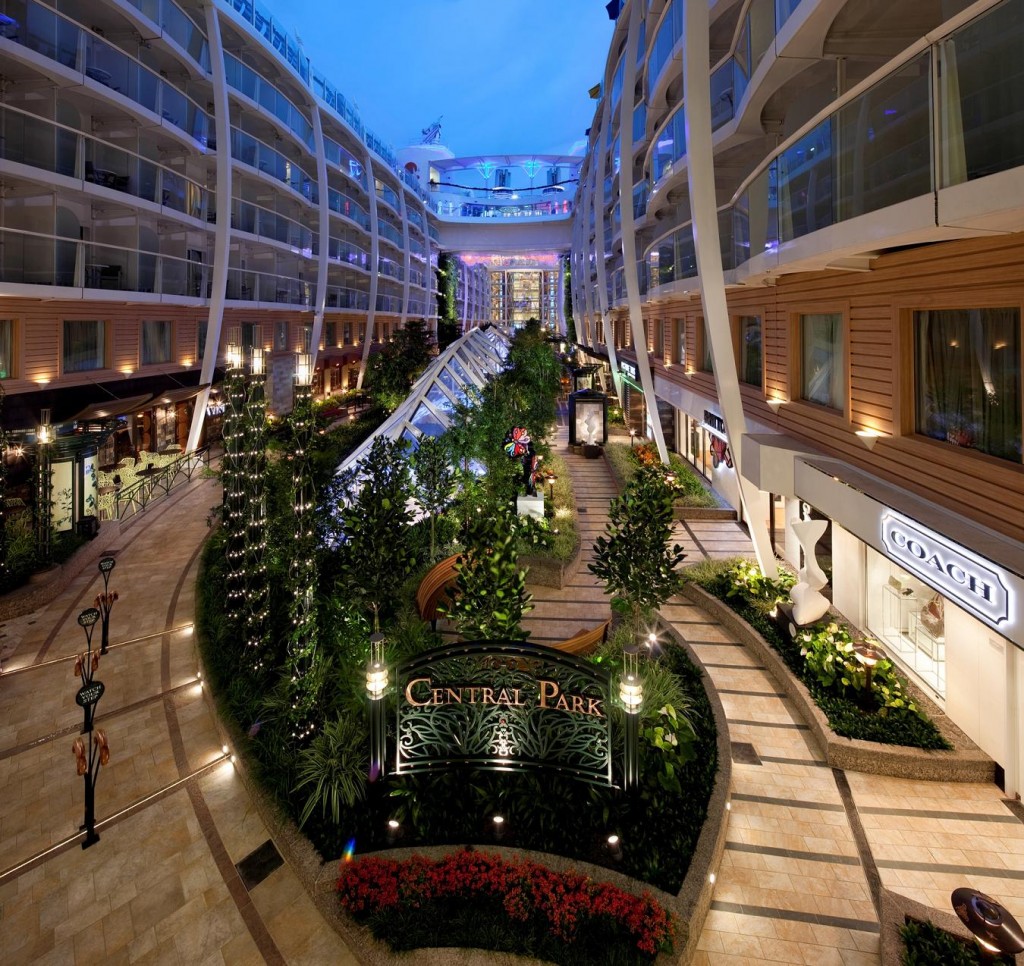
I care for all live and artificial plants, and a big portion of this is, of course, Central Park. Royal Caribbean has a zero tolerance policy on pests. The only things permitted to move on the ship are guests and crew members. There are a few exceptions, such as service and emotional needs animals. There are also small birds, lizards and frogs that take up temporary housing in Central Park which are all considered bio-control as they naturally help me out with little plant insects. When we go to Europe next year, they will all be just fine. However, I will try to have the birds leave the ship as I do not want to introduce a Caribbean bird to Europe.
Right now, the park contains nearly 13,000 individual plants, vines, and groundcover seasonal flowers, including 56 trees representing a total of just over 100 species. All plants are contained within 46 planter beds plus two massive Living Walls containing 2,200 individually sized aluminum modules (containers). Plants are a mix of coastal and highland sub-tropical species, selected for their ability to survive and thrive both in Central Park’s three microclimates and in the geographical areas that Oasis sails. Other plants around the park are either native or grown through the Caribbean and South Florida. Many of them are common indoor plants.
I love to see our guests’ jaws drop when they first walk into Central Park. People just cannot fathom what they are seeing. They have heard about Central Park and they have a pre-conceived notion of what it may look like, but when they actually see it they are just speechless. I love giving the Garden Tours which are always interesting and there’s always lots of laughter. I get a lot of praise from the guests and it really gets me pumped up and excited.
A lot of guests get tricked by the ambient sounds in Central Park. From 6am to 6pm you will hear birds and from 6pm to 6am it switches to crickets. Interestingly enough, Royal Caribbean has a funny sense of humor. If you’re on Allure of the Seas throughout the day you will hear birds but you will also hear an occasional donkey, a dog barking, a flock of Canadian geese and a few other animal sounds that are impossible to have on a ship. Some guests will be sitting at the Trellis Bar having a few cocktails and when they hear a donkey the look on their faces is priceless. It’s at that point that someone will make a comment like, “Hey, did you just hear that donkey?” with the spouse replying “I think you have had quite enough to drink.”
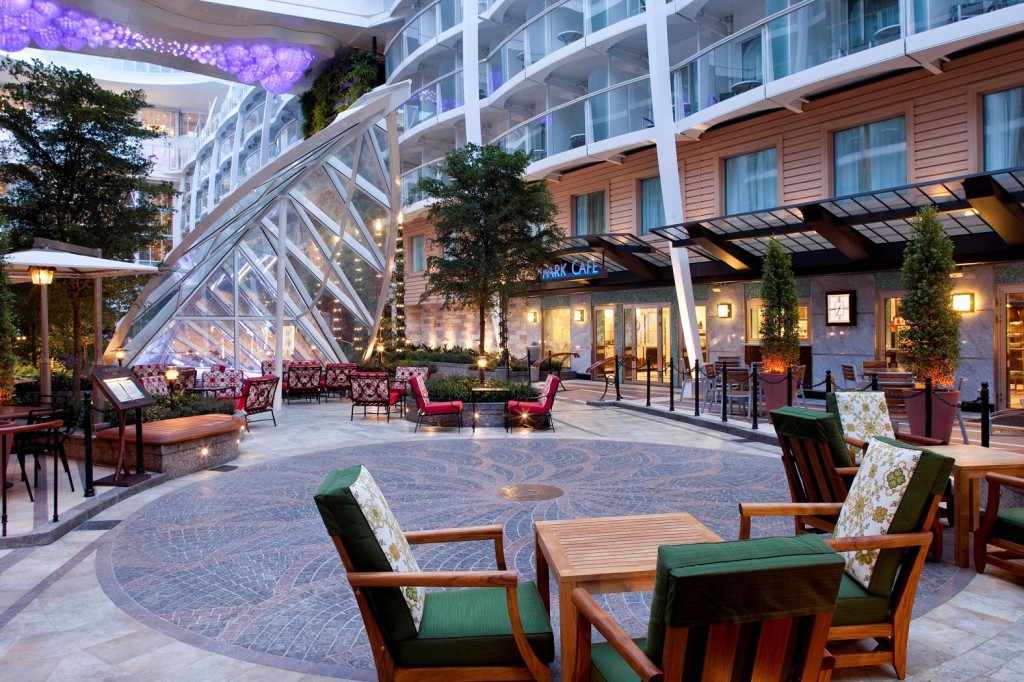
Managing a floating garden on the world’s largest cruise ships makes for a very fluid environment. I have three full time gardeners (horticulturists) who maintain Central Park, the Solarium on Decks 15, 16 and 17, Oasis Dunes (our miniature golf course), various artificial plants throughout the ships and the IPM program. We have a very solid schedule. Each week my gardeners will perform two different inspections which take them throughout the entire vessel. One inspection alone covers 132 different areas. One can easily walk up to 10 miles on these inspections in just one day. I wore a pedometer once and clocked 8.9 miles. Each horticulturist is responsible for one third of Central Park. One horticulturist also takes care of the Solarium first thing in the morning before the sunbathers come out.
“Turn-Around Days” (Saturday at Port Everglades), are extremely challenging. All 6,400 guests get off the ship and 45 minutes later a new group of 6,400 get onboard. We have a very tight window to prepare the park for new guests. I also have to go to the terminal before any new guests can enter to ensure that it has been properly sanitized and treated as part of the ship’s Outbreak Prevention Plan (OPP). Additionally, if I have ordered replacement plants, I have to inspect the shipment on the pier for pests before it can be loaded onto the vessel. Then the three gardeners and I have to get the plants in the elevator and up to Central Park, unwrapped and placed—but not planted (planting happens over the next two days). At the end of the day when we set sail at 5pm, we’re exhausted, but it’s a lot of fun in hindsight.
Being open minded, patient and creative are important personal strengths for this job. Remember that there are hundreds of books that teach you all about gardening on land but not one book that tells you how to do it on a ship at sea. What works on land may not work on the ship and visa-versa so there’s lots of trial and error. If something fails we try to figure out why and then try another plant that we think will work best for that given spot. Guests and co-workers often stop me and ask if I am okay because I am known for staring at a planter bed or looking up at the Living Walls in deep thought. I am forever brainstorming.
With 36 years of working in the field of Horticulture, I’m often asked for gardening tips. Overwatering is the number one cause of problems in the garden. If in doubt, you’re probably overwatering. Plants are smart—they will tell you when something is wrong. You just have to be very patient and keep your eyes wide open to look for tell-tale signs. Another great tip is for fertilizing. I always tell people to fertilize twice a month at half the recommended rate on pay days. Why pay days? Because you never forget pay day and therefore you’ll never forget to fertilize. Your plants will thank you for that. Another great tip is when planting herbs or vegetables. If you get a great yield from your crop that’s great, but if it fails just make a note so that when the following planting season comes around, you can try something different. A successful garden is all about patience. I am also a huge promoter of going organic in the garden.
